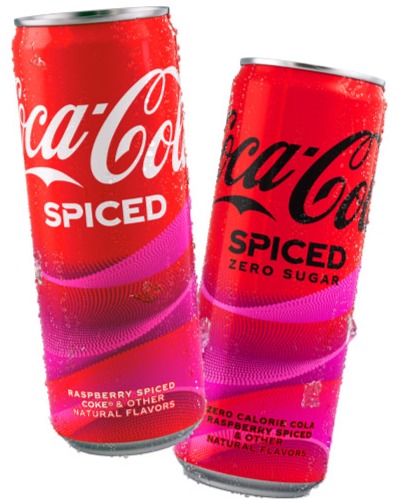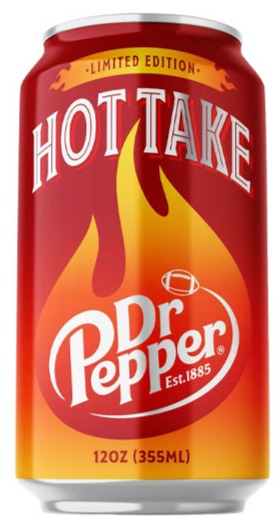Special Report
Consumers weigh different attributes when opting for carbonated soft drinks
Taste, functionality plays greater role in CSD selection

Image courtesy of PepsiCo
In pop culture, one of the most known fictional lists might be from “Friends” when Ross has Chandler and Joey help him compile a list of the pros and cons of his girlfriend, Julie, and long-time crush, Rachel. Although the list included some comical and heart-warming moments, fans know that its creation continued the will-they, won’t-they plotline that fueled the show.
As the carbonated soft drink (CSD) market has evolved, consumers are making their own lists about what they need and want from the refreshment beverage. But no matter what makes it on a consumer’s personal list, expert note that everyone will have one attribute that ultimately drives their decision-making: taste.
“Taste is the most important factor for consumers when choosing CSDs, yet flavor innovation, especially when it retains familiar elements, is welcome,” states Chicago-based Mintel in its “Carbonated Soft Drinks – US, 2023” report. “Considerations like sustainability factors and health benefits will not outweigh taste, yet consumers are considering a longer list of factors before making their CSD choices, putting brands on the spot to check more boxes and meet expanded needs.”
In the report, Mintel surveyed Internet users aged 18 or older who drank CSDs and divided them across three demographics: Generation Z (1997-2010), millennials (1980-1996), and Generation X (1979 or earlier). Across all three “taste great” was the top for all three with Gen X being indicated as the highest at 75%. Millennials edged out Gen Z with 60% of respondents versus 58% for the youngest cohorts.
Given the importance of taste, it’s no wonder that CSD manufacturers are eager to release flavor innovations ― permanent and limited-edition ― however, analysts note that the sustainability of these varieties is not always a guarantee.

“Flavor innovation continues to be a category mainstay as a means to bolster growth,” says Gary Hemphill, managing director of research at Beverage Marketing Corporation (BMC), Wintersville, Ohio. “Unfortunately, all too often new flavors have fleeting success that has not been sustainable. Still, flavor innovation remains an important way to bring news and excitement to the category.”
The major manufacturers of CSDs ― The Coca-Cola Co., Keurig Dr Pepper and PepsiCo ― are no strangers to flavor innovation. Given their legacies of creative, flavorful releases, all have been active on this front in recent months.
Most recently, MTN DEW, a brand of PepsiCo, Purchase, NY, is celebrating the 20th anniversary of its Baja Blast variety with the BAJAVERSERY in which the tropical lime flavored CSD will be available in stores all year. However, the soft drink brand is taking it a step further with two new MTN DEW BAJA flavors: Laguna Lemonade, a mango lemonade flavor, and Point Break Punch, a tropical punch flavor.
Available for a limited time, the two varieties are on shelves in 20-ounce single-serve bottles, 12-packs of 12-ounce cans, and club 28-packs of 12-ounce cans.
Meanwhile, last fall, Dr Pepper, a brand of Keurig Dr Pepper, Burlington, MA, and Frisco, TX, revealed the 2023 limited-edition flavor of the carbonated soft drink with the launch of Dr Pepper Hot Take, available exclusively to Pepper Perks members.
Dr Pepper Hot Take is a fiery turn on the original 23 flavors, harnessing the bold flavors of spicy peppers and honoring college football and all of the hot takes that come with the sport’s fandom, the company noted at the time of the release.

This year, Atlanta-based The Coca-Cola Co. announced that for the first time in more than three years, Coca-Cola has added a new permanent offering to its portfolio in North America: Coca-Cola Spiced. Coca-Cola blends the taste of Coca-Cola with a burst of notes from raspberry and spiced flavors, it says.
Coca-Cola Spiced will be available in a 12-ounce sleek can, 12-packs of 12-ounce cans, 10-pack mini cans, 20-ounce bottles, six-packs of 0.5-liter bottles, and 2-liter bottles. Coca-Cola Spiced Zero Sugar will be available in a 12-ounce sleek can, 12-packs of 12-ounce cans, and 20-ounce bottles at most national retailers.
The brand also added a limited-edition variety through its Coca-Cola Creations line: Coca-Cola K-Wave Zero Sugar. Coca-Cola K-Wave Zero Sugar celebrates fans and their infinite devotion for K-Pop artists through a Coca-Cola taste infused CSD with a burst of fruity-flavored K-Pop magic, the company says. Coca-Cola K-Wave Zero Sugar is available in select markets around the world including the United States, Spain, Singapore, South Korea and more. A frozen variation will be available in select markets.
“Consumers want to see healthier formulations and functional benefits if flavor remains intact, but aren’t looking for CSDs to become healthy beverages overall,” Mintel’s report states. “For most, CSDs are treats best enjoyed in moderation. Growth will come from new launches that are centered on meeting core needs of taste and indulgence.”
Mixing in functionality, BFY
Although taste is king, experts recognize that consumers also are interested in functional and better-for-you (BFY) benefits even when reaching for an indulgent refreshment.
“Overall the impact of health and wellness trends on carbonated soft drinks has been modest,” BMC’s Hemphill says. “The biggest factor has been solid performance of diet soft drinks. Beyond this, we’ve seen the emergence of healthier more functional prebiotic sodas, but their overall market impact has been minimal because volume remains small. Still, several brands have shown success which may bode well for the future of a healthier carbonated soft drink category.”
Beliv, a global bev-tech company founded by Carlos Sluman, formulated Mighty Pop, a CSD that contains the mighty three — prebiotics, probiotics and postbiotics — to support digestive and immune health. Each can delivers 1 billion live probiotic cultures and 3 grams of fiber from acacia plants, plus postbiotics. Packaged in 12-ounce cans, Mighty Pop is available in four flavors ― Strawberry Hibiscus, Berry Lime, Grapefruit Pineapple and Orange Vanilla.
For brands that have been in the BFY CSD space for a few years now, it’s not just about offering those functional offerings but building upon its flavor options.
Last fall, functional soda brand OLIPOP expanded its portfolio with Crisp Apple. Crisp Apple tastes like sparkling apple juice and gummy apple rings blended into one festive drink, the company says. Like all OLIPOP sodas, Crisp Apple offers digestive health support, minimal natural sugars and prebiotic plant fiber, making it a BFY option without compromising on taste, the company adds.
Given the proliferation and benefits that comes with BFY, analysts anticipate this could be the lift that the CSD market needs.
“Perhaps CSD’s best opportunity for future growth is the continued development of better-for-you products,” Hemphill says.
Coping with challenges
Despite the flavor and functional innovations lifting the category, the CSD market has struggled from a volume standpoint despite an increase in dollar sales.
“Carbonated soft drink volume performance was soft in 2023, but sales were robust due to higher prices,” Hemphill says. “This is a trend we’ve seen repeatedly over the last three years as prices have increased due to inflation. We expect pricing growth to be much slower this year.”
For 2024, Hemphill says the market research firm is predicting continued soft volume performance with dollar sales expected to fare better because of “modestly higher prices.”
Given this status, CSDs can tap into new usage occasions to change the tide.
“Consumers already enjoy CSDs with meals, but brands can further secure CSDs’ position as an essential part of meal and snacking routines,” Mintel’s report says. “New products can supplement cravings motivated snacking with indulgence, familiarity, or BFY elements as the need calls. Consumers don’t currently view CSDs as the ideal choice for alcohol alternatives or alcohol mixers, another area where product versatility will be welcome.”
Despite volume challenges, consumers still incorporate CSDs as part of their refreshment rotation, should the market be able to expand its usage occasions could factor into shifting volume declines.
Looking for a reprint of this article?
From high-res PDFs to custom plaques, order your copy today!





